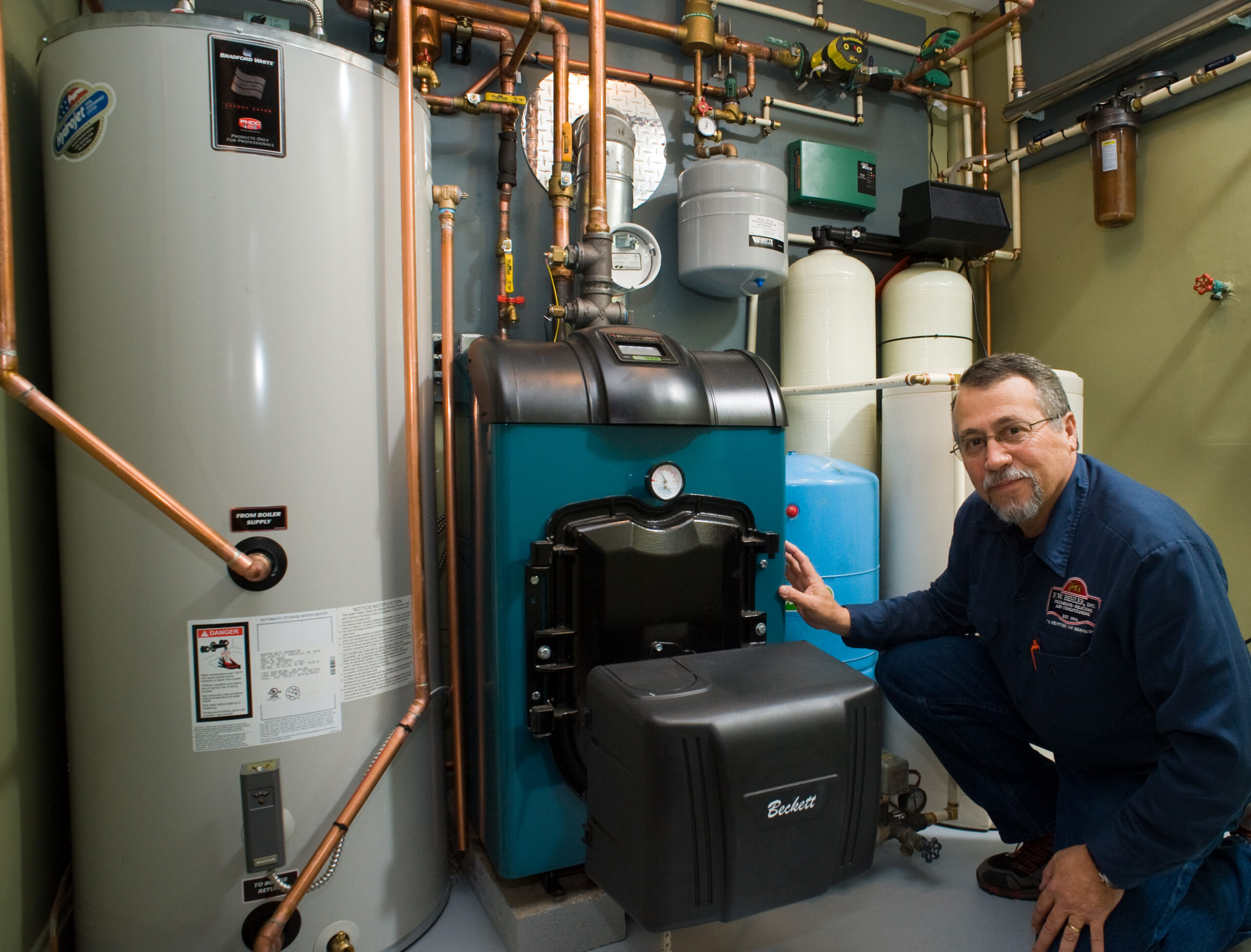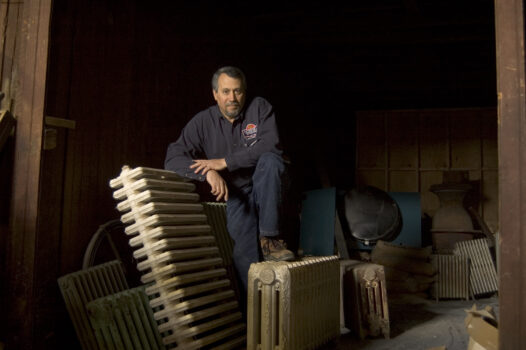F.W. Behler Inc., in York, PA, is one of the oldest continuously operating mechanical firms in the United States. Founded in 1887 by Franklin Washington Behler, the company was passed down through three generations.
Dave Yates began working for the Behlers as an apprentice 1972. In 1985, Yates purchased the business. He and his wife Lois operated the firm until Dec 6, 2019, at which point they sold it to a trusted employee and his family, Scott and Ryan Barnett.
Yates began working in the construction industry at the age of 12 and is still involved in the trades today. Even before selling F.W. Behler, Yates founded a consulting firm (consultyates.com), through which he serves as an expert witness in court cases involving P/HVAC issues. He also does hydronic system design and troubleshooting consultations.
A rough start
Beginning at age 12, Yates worked a lot of jobs before settling into his notable plumbing and HVAC career. His early years as a tradesman, however, were a bit rockier than most.
One of his early jobsite memories goes back to a project working for a steel fabrication company. Yates was on the roof, securing Bulter roof panels with a coworker. The colleague stepped on an unsupported panel, which buckled, bent, and shot the man off the roof to the ground 35 feet below.
Fortunately for Yates’ coworker, a load of fresh, uncompacted soil had just been trucked in and provided a soft landing. Had the soil been compacted, he most likely would have been killed. That incident was one to remember. Yates lost his nerve for walking across two-inch wide trusses, so he didn’t go topside again. The foreman assigned him to block tender for the masons, which is grueling work for a grown man, let alone a teenager.
That evening, Yates found a “help wanted” ad for a plumber with a minimum of six years’ experience. He had no years of experience.
“I called him anyway and got rejected,” said Yates. “I kept calling him each night until he finally agreed to interview me. Walking through his shop, he’d point to a tool and ask me what it was and what it was used for. Naturally, I mostly didn’t know, but I told him he’d only ever have to tell me once. Long story short, he hired me.”
Yates arrived on his first day only to discover he was the only employee.
“I thought my employer, Ray, was going to take me under his wing and teach me the ropes,” Yates explained. “Instead, he handed me a worksheet for a no heat call and sent me off on my own! After arriving, the homeowner led me to her basement and left me there with the boiler: an atmospheric, chimney-vented natural gas unit.”
Yates figured out how to remove the cover and burner access plate. The pilot was out. He read the instructions on the back of the access panel, turned the gas valve to pilot, depressed the knob and lit the pilot. After holding the gas valve knob down for a minute, he let up on the pressure and, of course, the pilot went out. He repeated the process with the same result.
Ray arrived and asked if Yates had figured out what was wrong. After listening to what Yates had done, Ray pointed to the tip of the thermocouple that rests in the pilot flame
“That needs replaced,” said Ray. “There are thermocouples on the truck. You’ll find them.”
Yates did find them, and it worked. This was the routine for every call, every day. He was on his own from day one. Fortunately, he was mechanically inclined and could muddle his way through each repair call.
A lesson hard learned
Not a week into his new job, Yates had a day that would sear itself into his memory and impact the way he worked for the rest of his life.
Yates and a helper were installing a cast iron sewer line in an unprotected, eight-foot-deep trench. Ray had left the two boys alone to install the line.
 A woman from a nearby house ran outside saying that an alert was just broadcast by a local radio station, asking for anyone available to respond to a trench cave-in nearby.
A woman from a nearby house ran outside saying that an alert was just broadcast by a local radio station, asking for anyone available to respond to a trench cave-in nearby.
Just then, Ray returned in his pickup truck and yelled at the boys to grab their shovels and hop in the bed of the truck. They were the first to arrive on the scene.
“Three men were trapped in a trench with no shoring while installing a cast iron sewer line, just as we’d been doing minutes earlier,” said Yates. “The first man was clearly dead. He’d already changed color with blood running from his nose and mouth. He’d been crushed by the wall of earth that remained solid. I could see he’d attempted to jump up out of harm’s way because his feet were about a foot above the bottom of the ditch.”
“Not far from him, a second man was trapped up to the top of his chest, but the dirt surrounding him had broken up, which prevented him from being crushed,” continued Yates. “The third man had been trapped from the waist down and had managed to extract himself.”
While Yates and the helper set about extracting the live man, police, onlookers, and an ambulance arrived. It turned into a circus, with far too many crowding the edges of the ditch.
“I told the police to cordon off the area for our safety,” said Yates. “The medics explained that there was real danger of the trapped man developing compartment syndrome, which can be fatal, so time was of the essence. It turns out blood can become toxic if it’s not circulating.”
The crew dug the man out and the ambulance took off. Yates and his helper, assuming they were finished, climbed out of the ditch.
Ray said, “What are you doing? Get back in there and dig out the dead guy.”
“While we were digging out the deceased man, a car came screeching to a halt and a young woman jumped out. Upon seeing the man, she started screaming and wailing. Her husband – the corpse that remained in the trench – was the owner of the plumbing company. I can still hear her screams in my memory.”
Yates never again worked in an unprotected trench from that day forward. In fact, he was ready to move into a new field, but his father had a rule: don’t quit until you’ve lined-up the next job.
Dick Stover, a family friend who owned a plumbing supply house, heard about a job opening at F.W. Behler. He encouraged Dave’s parents to tell their son about it. That evening, Yates gave Ray his two-weeks’ notice.
So, at 20, Yates began his career at F.W. Behler. He kept his eye on the “help wanted” ads for a few more weeks. One day, it dawned on him that he’d stopped looking for another job. He’d grown to enjoy the work and looked forward to each new day’s challenge
That was the real beginning to a long career in the mechanical trades!
Forging relationships
Under Yates’ leadership, F.W. Behler grew. So did reputation for designing, installing and troubleshooting complex hydronic heating systems. He recognized early the importance of building relationships with manufacturers of quality mechanical components, along with the rep firms that served them.
“I remember the very first contact I ever had with Burnham,” said Yates. “It was in 1972, at a local seminar,” said Yates. “I saw a flyer and asked Herb and Scott Behler if I could attend.”
“Why do you want to do that?” they asked.

“To learn,” Yates replied. “I then took personal time off without pay to go and meet some Burnham employees that day, which began my close, decades-long relationshipwith a manufacturer, the first of many such relationships that paved the way for gaining both knowledge and close ties with the people behind the products we purchased and installed.”
Today, with more than 48 years in the mechanical trades, Yates admits it was a crucible moment.
Those relationships enabled Yates to keep F.W. Behler on the leading edge of emerging technology, separating the company from its competition. In turn, that led to his being included in beta-testing numerous products and being permitted to have a peek under the hood of many experimental products being tested in R&D labs. Over the years, he signed many confidentiality agreements.
In another example, Yates was one of the first contractors to see ECM circulators in the United States. The owner of one pump manufacturing company even consulted Yates on whether he thought ECM pump technology would find acceptance in the US.
“What are you waiting for?” asked Yates. The company soon made a huge investment in the future of pump technology.
Salvaging a piece of history
Some things never go out of style, especially if they’re of high quality. Yates played a key role in keeping at least one piece of hydronic history alive.
U.S. Boiler Company and Governale both sell brand-new cast-iron radiators in various styles. Some of the units are modern looking. Some appear clean and commercial, and one in particular – the radiator in this story – harkens back to the very earliest days of hydronic heat.
“More than 30 years ago, one of U.S. Boiler Company’s product development engineers called me at the shop,” said Yates. “We’d worked together on various projects before, and he knew I had a warehouse full of ancient radiators. He asked me if I had any radiators with ornate scrollwork on them, like you’d see in old, Victorian homes. I did.”
“He drove from Lancaster, PA to my shop in York,” said Yates. “We walked through the warehouse looking for the most beautiful antique radiator I had. He found one he thought was perfect, and we disassembled it so he could take the end section back to the plant with him.”
That radiator section became the rough blueprint when U.S. Boiler Company and Governale designed what is today the “Classic” and “Victoria” (respectively) radiator models!
Dave Yates’ career exemplifies dedication, perseverance, and innovation in the plumbing and hydronic industry, from his early days as an apprentice to becoming a respected consultant and business owner. His contributions to the field and the relationships he built over decades have left a lasting impact, ensuring that his legacy within the mechanical trades endures.
The consulting work he does today helps protect heating contractors who do admirable work and weeds out those that seek to take advantage of customers and tarnish the name of our trade.

